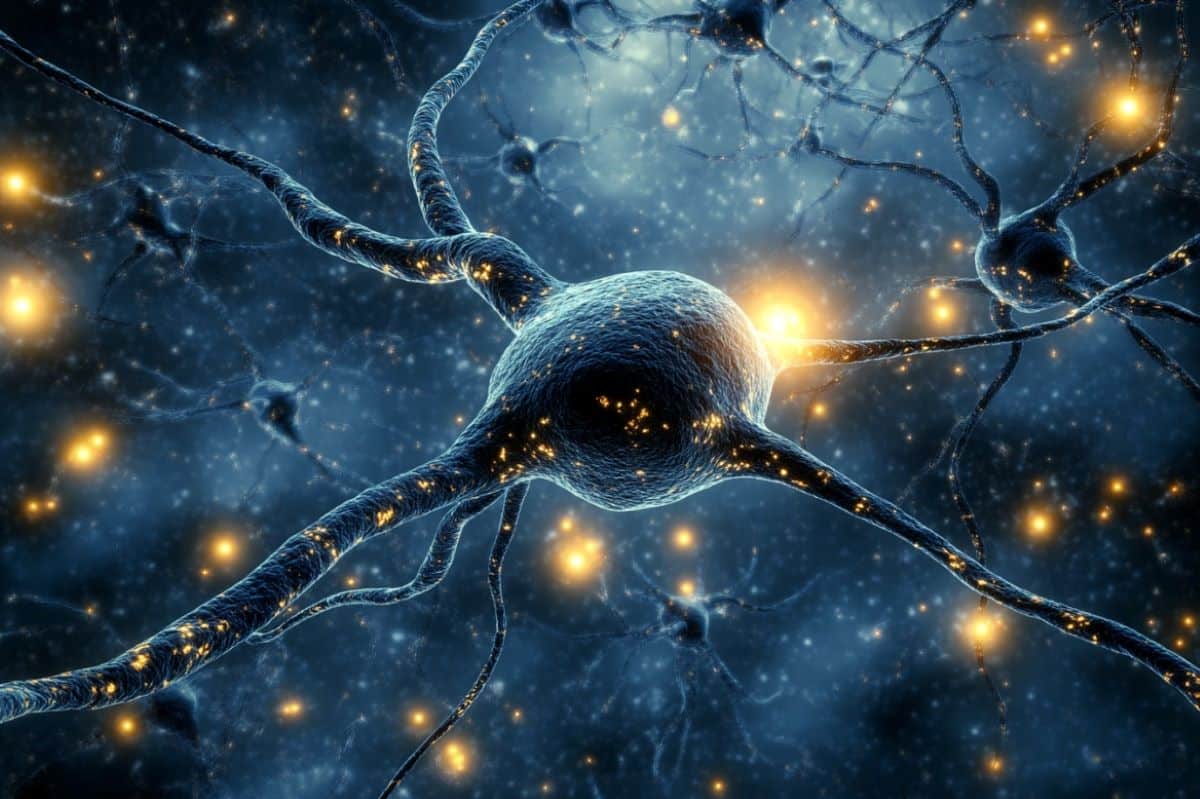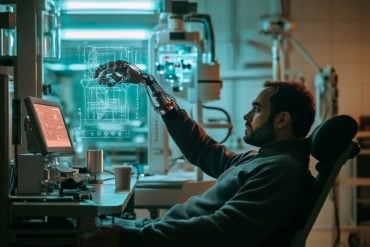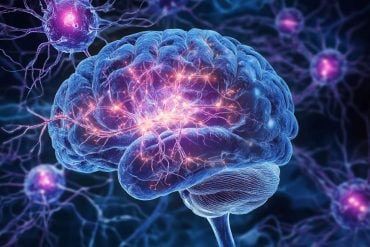Summary: Researchers have identified specific brain cells, known as concept neurons and location cells, that predict whether we will successfully remember people and places.
These neurons in the medial temporal lobe and parahippocampal cortex become active during memory formation, responding to specific images and locations. Their activity is linked to successful memory retention, with higher firing rates when memories are later recalled correctly.
This discovery enhances our understanding of how the brain encodes and consolidates autobiographical memories.
Key Facts:
- Concept and location neurons predict memory success based on their activity.
- These neurons are located in the medial temporal lobe and parahippocampal cortex.
- Higher firing rates in these neurons are linked to better memory recall.
Source: University of Bonn
Certain nerve cells in the brain become active whenever they are confronted with different images or the name of a specific person or the identity of an object. They are highly selective and do not react to other people or objects.
These so-called concept neurons have so far only been found in humans, and here only in the medial temporal lobe, which is essential for memory formation.

An international research team led by Prof. Florian Mormann from the Department of Epileptology at the UKB, who is also a member of the Transdisciplinary Research Area (TRA) “Life & Health” at the University of Bonn, has already confirmed their important function for working memory in a study from 2017, in which individual concept neurons representing specific persons or objects keep memory content available for a short time.
They remain active until a new image is shown and another neuron is stimulated.
In addition, the research team was even able to use the activation of the concept neurons during the working memory phase to predict whether the test subjects would later correctly remember the image that had already been shown.
But how a successful transfer of the experiences into the episodic memory, which stores autobiographical events and experiences including place and time, works, was previously unclear.
“We therefore pursued the hypothesis that these concept neurons provide the building blocks that are put together to form a memory of an experience,” says first author Sina Mackay, a doctoral student at the University of Bonn in Prof. Mormann’s research group at the UKB.
Neuronal activity provides “what” and “where” in memory formation
For its scientific work, the Bonn research team uses a special feature of the Clinic for Epileptology at the UKB – one of the largest epilepsy centers in Europe: here, people with severe forms of epilepsy can have surgical and other treatments. In some cases, electrodes are first implanted in the brain to localize the source of the seizure.
As a side effect, the research team can measure the electrical activity of individual neurons while epilepsy patients perform tasks – for the current study, it was an associative memory paradigm, in which people or objects were assigned to a specific position on the screen.
Meanwhile, the Bonn researchers carried out measurements in the medial temporal lobe and the parahippocampal cortex, which houses location cells.
This time, they focused not only on the behavior of concept neurons, but also on that of location cells, which reacted to certain positions on the screen on which the images were shown, regardless of which images were displayed at that position.
While Prof. Mormann’s research team had already found a prediction effect, the Bonn researchers have now been able to show that the activity of concept neurons in the medial temporal lobe and place neurons in the parahippocampal cortex predicts the correct memorization of concept-location pairs.
“In both the object-selective and location-selective neuron populations, the firing rates were significantly higher if they were later remembered correctly”, says Mackay.
In contrast, the remaining neurons, which make up more than 90 percent in these regions, did not predict successful memory formation, underscoring the highly specific role of concept and location neurons.
“We assume that the mediotemporal concept neurons and possibly also the parahippocampal place cells, which are involved in our daily experiences, are reactivated during the consolidation of memory – for example during deep sleep,” says Prof. Mormann, who believes that future studies are needed to investigate this hypothesis.
Funding: This research project was funded by the Volkswagen Foundation and the German Research Foundation (DFG) as part of the Collaborative Research Center (SFB) 1089.
About this memory and neuroscience research news
Author: Inka Väth
Source: University of Bonn
Contact: Inka Väth – University of Bonn
Image: The image is credited to Neuroscience News
Original Research: Open access.
“Concept and location neurons in the human brain provide the ‘what’ and ‘where’ in memory formation” by Florian Mormann et al. Nature Communications
Abstract
Concept and location neurons in the human brain provide the ‘what’ and ‘where’ in memory formation
Our brains create new memories by capturing the ‘who/what’, ‘where’ and ‘when’ of everyday experiences. On a neuronal level, mechanisms facilitating a successful transfer into episodic memory are still unclear.
We investigated this by measuring single neuron activity in the human medial temporal lobe during encoding of item-location associations.
While previous research has found predictive effects in population activity in human MTL structures, we could attribute such effects to two specialized sub-groups of neurons: concept cells in the hippocampus, amygdala and entorhinal cortex (EC), and a second group of parahippocampal location-selective neurons. In both item- and location-selective populations, firing rates were significantly higher during successfully encoded trials.
These findings are in line with theories of hippocampal indexing, since selective index neurons may act as pointers to neocortical representations.
Overall, activation of distinct populations of neurons could directly support the connection of the ‘what’ and ‘where’ of episodic memory.






